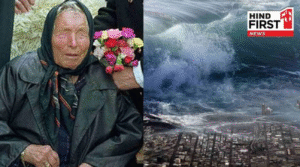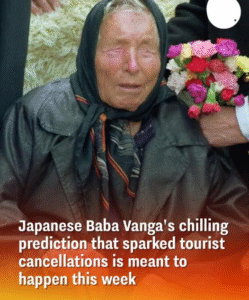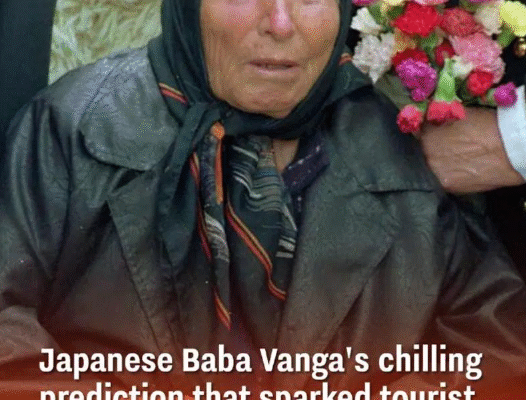 Japanese Baba Vanga’s Chilling Prediction Sparks Tourist Cancellations
Japanese Baba Vanga’s Chilling Prediction Sparks Tourist Cancellations
In the summer of 2025, a wave of unease swept through East Asia as travelers canceled trips to Japan in response to a dire prediction made by Japanese manga artist Ryo Tatsuki, dubbed the “New Baba Vanga.” Tatsuki’s forecast, published in her 1999 manga The Future I Saw, warned of a catastrophic disaster set to strike Japan on July 5, 2025. The prediction, which described the ocean floor between Japan and the Philippines cracking and unleashing a tsunami more powerful than the 2011 Tōhoku disaster, ignited widespread panic and led to a significant decline in tourism to Japan.
The Prophecy That Shook Travelers
Tatsuki’s manga, originally published in 1999 and reprinted in 2021, gained renewed attention as the predicted date approached. The specific passage in question detailed a seismic event that would cause the sea floor to split, resulting in a massive tsunami. Given Tatsuki’s previous track record of seemingly accurate predictions, including the 2011 Tōhoku earthquake, many took her latest warning seriously.
As the date drew near, travelers from neighboring countries, particularly Taiwan, China, South Korea, and Hong Kong, began canceling their plans to visit Japan. According to reports, flight bookings from Hong Kong dropped by up to 83%, and overall tourism to Japan saw an 11% decline compared to the previous year. The fear of an impending disaster overshadowed the usual summer travel excitement.
Scientific Reassurances Amidst Rising Fears
Despite the growing anxiety among potential tourists, Japanese officials and scientists were quick to address the situation. The Japan Meteorological Agency and seismologists emphasized that accurately predicting the exact timing and location of earthquakes and tsunamis was currently impossible. They described such prophecies as baseless and urged the public to rely on scientific data and expert analyses rather than unverified predictions.
Ayaka Ebita, director of the Earthquake and Tsunami Observations Division at the Japan Meteorological Agency, stated that the earthquakes occurring around the predicted date were “totally coincidental” and attributed to the region’s natural seismic activity. She further advised people to “base their judgment on science” and not be swayed by rumors or prophecies.
A Day of Tension and Relief
July 5, 2025, arrived with bated breath. As the day progressed without incident, many breathed a sigh of relief. However, the sense of unease lingered. While the anticipated disaster did not occur on the predicted date, the psychological impact of the prophecy had already taken its toll. The tourism industry in Japan faced challenges in restoring traveler confidence, and the event sparked broader discussions about the influence of prophecies on public behavior.
The Broader Impact on Tourism
The ripple effects of Tatsuki’s prediction were felt across the tourism sector. Airlines, hotels, and tour operators reported significant losses due to the surge in cancellations. In Hong Kong, Greater Bay Airlines reduced flights to Sendai Airport, and Hong Kong Airlines suspended services to Tokushima Airport entirely. The Japanese tourism industry, which had been recovering from previous downturns, now faced a new hurdle in rebuilding its reputation and attracting international visitors.
The Role of Social Media and Public Perception
The rapid spread of Tatsuki’s prophecy on social media platforms amplified the sense of impending doom. Hashtags like #July2025Prediction trended across various platforms, with users sharing and discussing the forecast. This viral dissemination contributed to the widespread panic and subsequent travel cancellations.
Despite the lack of scientific evidence supporting the prophecy, the power of social media in shaping public perception was evident. The incident highlighted the challenges authorities face in managing misinformation and maintaining public trust in expert guidance.
Looking Ahead: Lessons Learned
The events surrounding Tatsuki’s 2025 prediction serve as a poignant reminder of the influence that prophecies and rumors can have on public behavior. While Japan’s tourism industry works to recover, the incident underscores the importance of critical thinking and reliance on credible sources of information.
As the world continues to navigate the complexities of information dissemination in the digital age, the 2025 Japan prophecy stands as a testament to the enduring impact of belief and the need for vigilance against unfounded fears.



